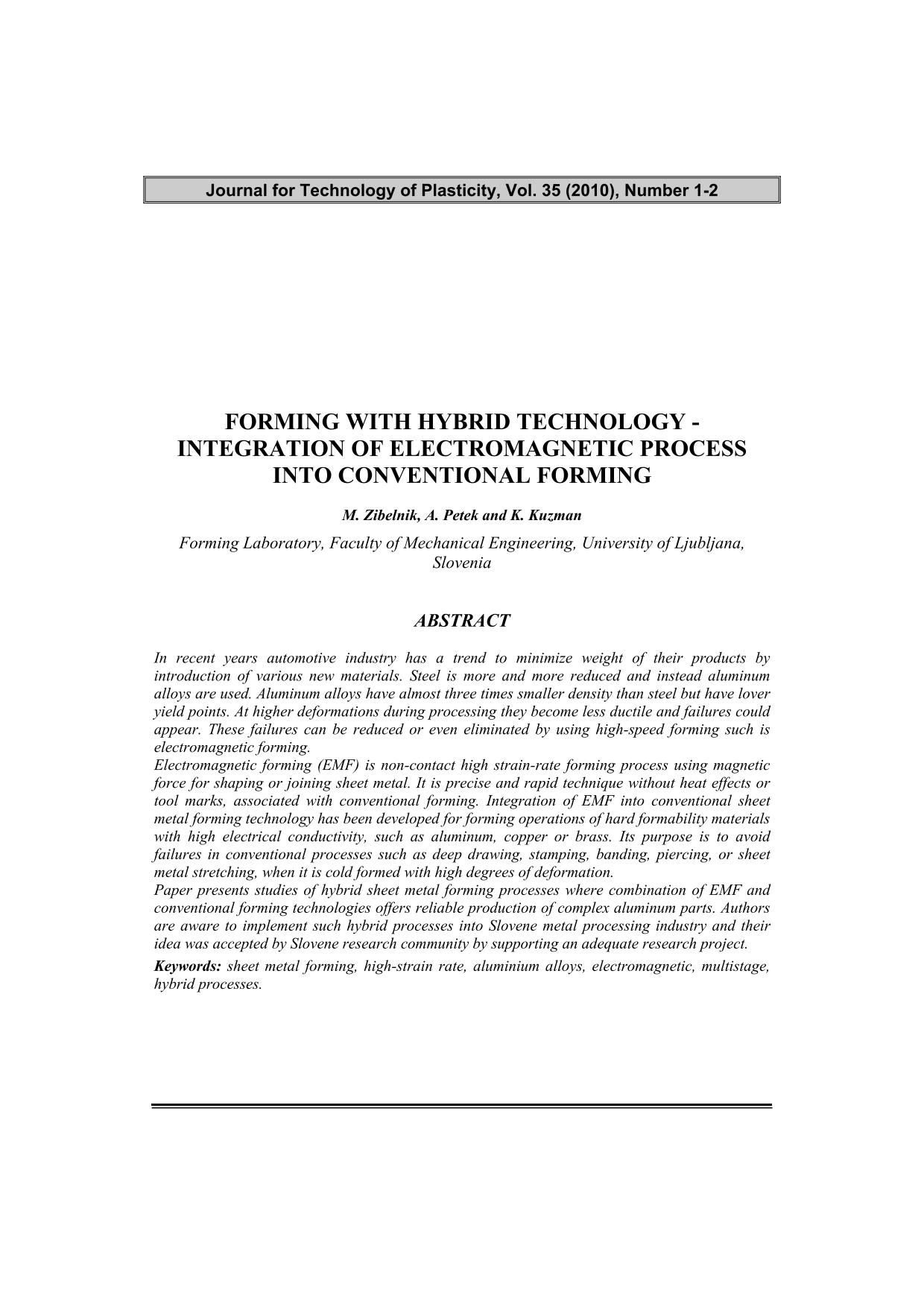Forming with hybrid technology - integration of electromagnetic process into conventional forming

Published 2010-12-17
abstract views: 8 // Full text article (PDF): 6
Keywords
- sheet metal forming,
- high-strain rate,
- aluminium alloys,
- electromagnetic,
- multistage
- hybrid processes ...More
How to Cite

This work is licensed under a Creative Commons Attribution 4.0 International License.
Abstract
In recent years automotive industry has a trend to minimize weight of their products by introduction of various new materials. Steel is more and more reduced and instead aluminum alloys are used. Aluminum alloys have almost three times smaller density than steel but have lover yield points. At higher deformations during processing they become less ductile and failures could appear. These failures can be reduced or even eliminated by using high-speed forming such is electromagnetic forming. Electromagnetic forming (EMF) is non-contact high strain-rate forming process using magnetic force for shaping or joining sheet metal. It is precise and rapid technique without heat effects or tool marks, associated with conventional forming. Integration of EMF into conventional sheet metal forming technology has been developed for forming operations of hard formability materials with high electrical conductivity, such as aluminum, copper or brass. Its purpose is to avoid failures in conventional processes such as deep drawing, stamping, banding, piercing, or sheet metal stretching, when it is cold formed with high degrees of deformation. Paper presents studies of hybrid sheet metal forming processes where combination of EMF and conventional forming technologies offers reliable production of complex aluminum parts. Authors are aware to implement such hybrid processes into Slovene metal processing industry and their idea was accepted by Slovene research community by supporting an adequate research project.

